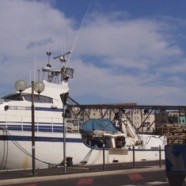Wood Energy massacres trees and biodiversity
Chainsaws are impatient and are cutting down without letting up. They are pairing up with wood shredders that reduce fallen trees into fuel. Nothing comes through alive; hundred year old, notable, or isolated trees, tree-lined avenues, and forests. Any excuse will do; they block the sun, they obstruct the view, they are sick, they interfere with the train, they accumulate starlings, are dangerous for road safety, and even hedges are not safe. France is burning since the government, ADEME (Environmental Agency and Energy Control) and environmentalists have promoted forests to the level of renewable energy and the collective and individual heating using wood is spreading like an epidemic. Right-minded people and smooth talkers are busy forming their energy packages, offering it to voters while looking elsewhere; Amazon, Indonesia, and the island of Borneo with insincere crocodile tears.
The After Shock
Climatic, geological, or anthropogenic natural disasters produce in a couple of seconds, hours or days, enormous amounts of waste, so much so that authorities are unable to handle the quantity with ordinary means. The rupture of “lifelines”, namely water, electricity, transportation routes and communication lines, send survivors into a deep confusion. The accumulation of rubble and waste increases the shock of the populations and postpones the first steps towards the return to normalcy.
The 3 million tonnes of rubble generated by the earthquake in Los Angeles in January 1994 led the city to reinforce and multiply its recycling capacities. Provisional transit and elimination sites for future earthquakes were pre-selected.










